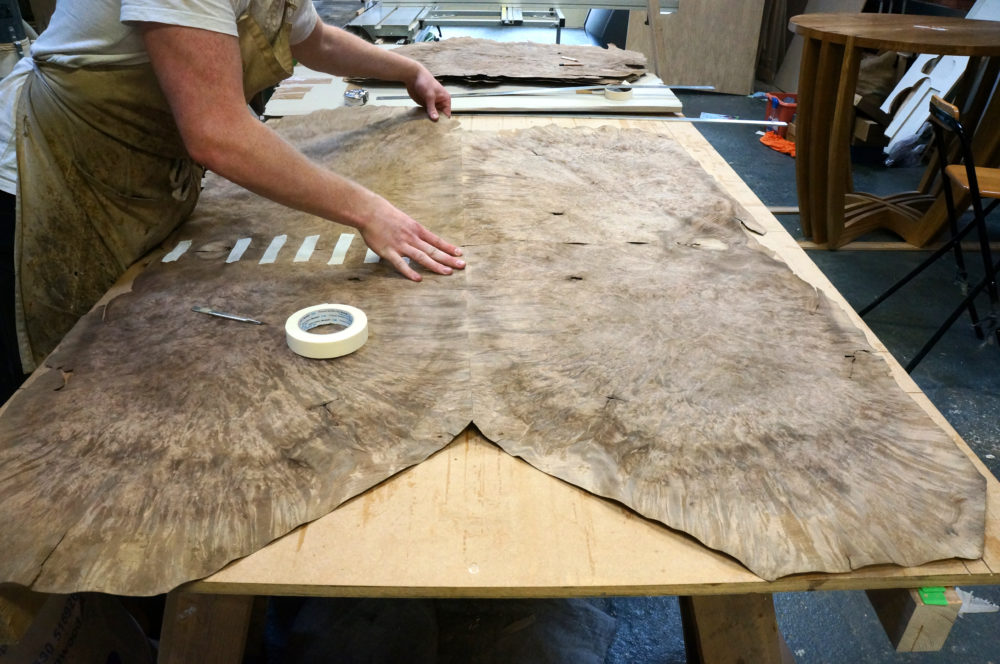Celebrating traditional skills in contemporary furniture design
Far from being a nostalgic attempt to preserve skills from a bygone era, our use of traditional techniques like book matching and veneering is about bringing beauty and individuality to our bespoke furniture. Even the most contemporary furniture designs can be enhanced by skills that have been used in furniture making for centuries.
Nurturing a love affair
The design process is like any relationship – the more you put into it, the stronger and more precious it becomes. This is certainly true of furniture design and it’s something we see all the time when we are working with customers. Together we develop an idea between us, taking it forward in stages. The making is done in our workshop but the concept is an evolutionary process between designer and customer. This is the real beauty of bespoke furniture and the relationship that develops during the designing and making process results in a piece of furniture that is highly personal, has been created to serve a specific practical function or enhance a special space and is likely to be cherished for many years.
Modern methods
When we are designing and making contemporary furniture we make the most of every asset available to us. Technology allows us to push the boundaries of design, making complex calculations to help us achieve things that would never be possible without computers. When it comes to bringing the design to life, we are fortunate to have our own CNC machinery which enables us to introduce efficiency into the production process.
Traditional skills
Our master craftsmen are highly skilled in techniques such as bookmatching and veneering and these can add a wonderful dimension to our designs. We recently completed a media cabinet for a customer which was an opportunity to showcase the spectacular features of burr oak using these traditional skills.
Bookmatching is a technique, usually associated with veneering, which many people will have seen used on violins, guitars and the interiors of luxury cars. The effect can be subtle or dramatic depending on the wood and grain. We bookmatch by hand, matching two pieces of veneer so that the adjoining surfaces mirror one another. The effect is one of an opened book, hence the name.
Drama and beauty
The use of veneer is one of the most misunderstood aspects of furniture making and we have written a piece dispelling some of the myths which you can read here. Our recent media cabinet project demonstrates perfectly how the art of veneering makes it possible to showcase the drama and beauty of burr wood, which is richly grained and really quite striking. The nature of the grain makes burr wood prone to splitting. Veneering overcomes this challenge by stabilising it for use in furniture making. The effects that can be achieved with veneering, when combined with our careful design and attention to detail in manufacturing, result in a piece of furniture that will withstand all the pressures of daily use, retaining its functionality and good looks for many years to come.
Sustainability
Finally, a word about sustainability. In our throwaway society, it is immensely rewarding to help our customers create furniture that inspires them. When time and care has been invested in the creative process, the final piece has meaning as well as purpose and is likely to be treasured for generations.

